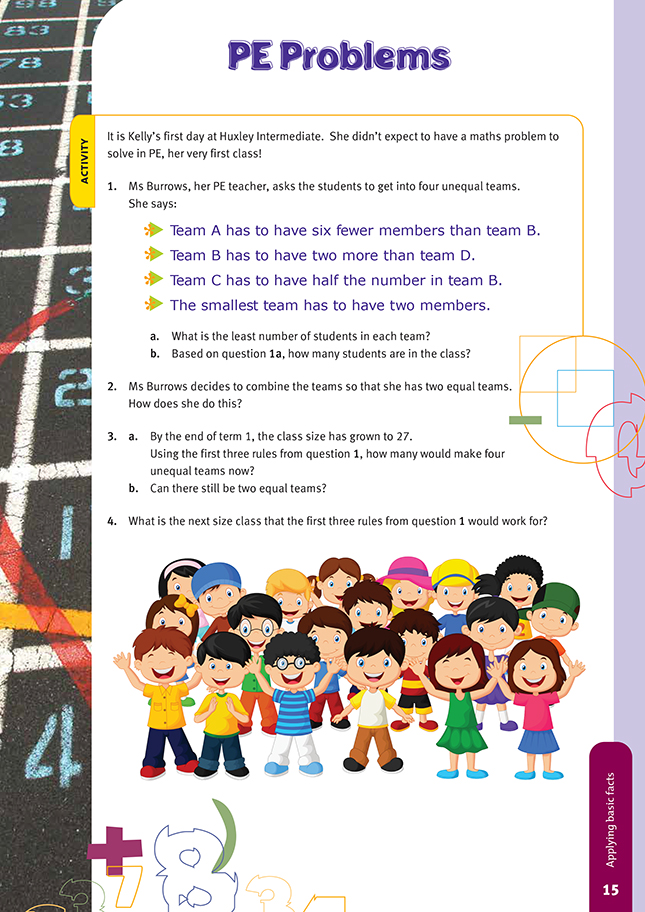This is a level 3 number link activity from the Figure It Out series. It relates to Stage 6 of the Number Framework.
A PDF of the student activity is included.
Click on the image to enlarge it. Click again to close. Download PDF (540 KB)
use basic facts to solve a problem
FIO, Link, Number, Book Three, PE Problems, page 15
The students should spend some time thinking about how they will approach this problem. Although basic facts will be used to find the answer, how to even start could be a problem for some students. The four-step method outlined in the problem-solving section of www.nzmaths.co.nz provides a good framework to work with:
Step 1: Understand and explore the problem.
Step 2: Find a strategy.
Step 3: Use the strategy to solve the problem.
Step 4: Look back and reflect on the solution.
The following problem-solving strategies could be considered as students work through the first few steps:
• Guess, then check and improve.
• Use equipment.
• Act it out.
• Draw a diagram or picture.
• Make a list or table.
• Use logic and reasoning.
• Use algebraic thinking.
For this particular activity, you could suggest to a struggling student that they first make an assumption, for example, team D is the smallest, and start working from there. If this doesn’t give the correct answer, then have them try assuming that another team is the smallest. Encourage your students to use logic and reasoning
to find which teams could be the smallest.
The students can use the same problem-solving approach for question 3, but those who are comfortable using algebraic notation might like to solve it algebraically. For example, all the team sizes can be expressed in relation to team B:
a = b – 6
c = b ÷ 2
d = b – 2
We know that a + b + c + d = 27, so using the information above, this can be rewritten as:
A table as a problem-solving approach could look like this:over that period of time.

Answers to Activity
1. a. Team A: 2
Team B: 8
Team C: 4
Team D: 6
b. 20
2. A + B and C + D
3. a. Team A: 4
Team B: 10
Team C: 5
Team D: 8
b. No. (27 is an uneven number.)
4. 34 if you are allowed two teams of 6 (Team A: 6; Team B: 12; Team C: 6; Team D: 10)
41 if each team needs to have a different number of students (Team A: 8; Team B: 14; Team C: 7; Team D: 12)

